Inspired by the popular uprisings against dictatorships across the Arab region, Palestinians were resolved to commemorate the 63rd anniversary of the ethnic cleansing of 800,000 people from their country by making history, rather than remembering it.
“Allahu Akbar!” the crowd roared around me.
Thousands of refugees and other Palestinians had gathered at the Erez Crossing in the northern Gaza Strip. An imposing military structure of massive concrete barriers and machine gunners’ towers, the border wall separates Gaza Strip residents from the 78% of Palestine seized by the State of Israel in 1948. For the two-thirds of residents who are refugees, it also prevents their return to the homes from which they and their families were forcibly expelled that year.
“Yalla, Shebab!” A half-dozen other men – none of whom could have been older than twenty, and most of whom looked much younger – rushed forward, retrieving their fallen compatriot and carrying him quickly to a waiting ambulance. A thin trail of blood marked their path, ending in a small, dark puddle where the first of the day’s many gunshot victims had fallen.
The Israeli response had come quickly. Bullet after bullet penetrated the crowd of unarmed demonstrators. Artillery shells pounded the sandy dunes around us, and after several hours, tear gas canisters hissed through the air.
Over a hundred people were hospitalized with serious injuries, while elsewhere on the border, a 17-year old boy was killed by artillery fire. The rest of us escaped with tear gas inhalation, cuts from exploding concrete and shrapnel, and bloodstains from the limbs, torsos, and faces.
On June 5, when Israel marks the anniversary of the occupation of the West Bank, Golan Heights and Gaza Strip, during the 1967 war, another protest is planned. Just like the first; an unarmed outpouring from Palestinians demanding an end to occupation and a restitution of their human rights and dignity.
The sentiment I observed at the Gaza march was repeated simultaneously along two of Israel’s other borders, where the violence inflicted upon peaceful marchers was even worse. At the border between Syria and the Israeli-occupied Golan Heights, Israeli gunfire killed four of them, while in Lebanon, ten were said to have been slain. Hundreds were injured.
On Sunday, June 5, the refugees plan to return to the borders created to exclude them. Like the 63rd Nakba Day, this 44th anniversary of the Naksa, or setback – Israel’s 1967 occupation of the Gaza Strip and West Bank, and subsequent expulsion of 300,000 additional refugees – promises a commemoration like none before it.
June 5 will not determine the outcome of the Palestinian movement for return. That outcome was already determined by the decades of grassroots organizing and popular struggle that culminated in the historic mobilization of May 15. Its finality can be glimpsed in grievances by Western media like Reuters that “[t]he Palestinians who forced their way across Israel’s border on Sunday turned back the clock on the Middle East conflict, putting center stage the refugee question that many believed would be negotiated away,” and confirmed by the sweaty, stammered insistence of Zionists like Benjamin Netanyahu that “it’s not going to happen. Everybody knows it’s not going to happen.”
Those suddenly forced to defend not only the brutal excesses of their system, but the very racism of ethnic cleansing, exclusion, and apartheid upon which its existence relies, find themselves in a situation both uncomfortable and unprecedented. They have no reason to expect it to become easier in the coming months, as further waves of returning refugees push their fight for justice closer to the center of the world’s attention.
But June 5 will shape the outline of this next chapter in the Palestinian saga: its intensity, its length, and what follows it. Was May 15 a singular moment, or perhaps one suited for occasional repetition? Or was it the harbinger of a sustained, consistent struggle to come, a third intifada simultaneously challenging Israel from within, on every border, and across the globe?
Palestinians have amply demonstrated their ability to resist occupation over the long haul, while the global solidarity network supporting them has reacted capably to atrocities like the slaughters of 1,400 Palestinians during Operation Cast Lead and nine passengers on the first Freedom Flotilla. If these two movements can organize and mobilize as effectively now, seizing a unique opportunity to take the offensive and keep it, the Palestinian freedom struggle could prove a quicker and more decisive one than many of us had dared to hope.
Joe Catron is a resident of Brooklyn, New York and a current member of the International Solidarity Movement in the Gaza Strip. He writes in a personal capacity.
![]()
█ Action Alert ▶ June 5th 2011 | Support the Palestinian refugees’ Right to Return
In pictures
More pictures in the Gallery

 June 1, 2011
June 1, 2011 


























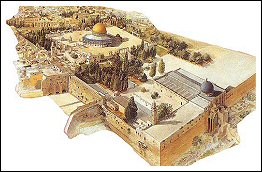


Comments are closed.